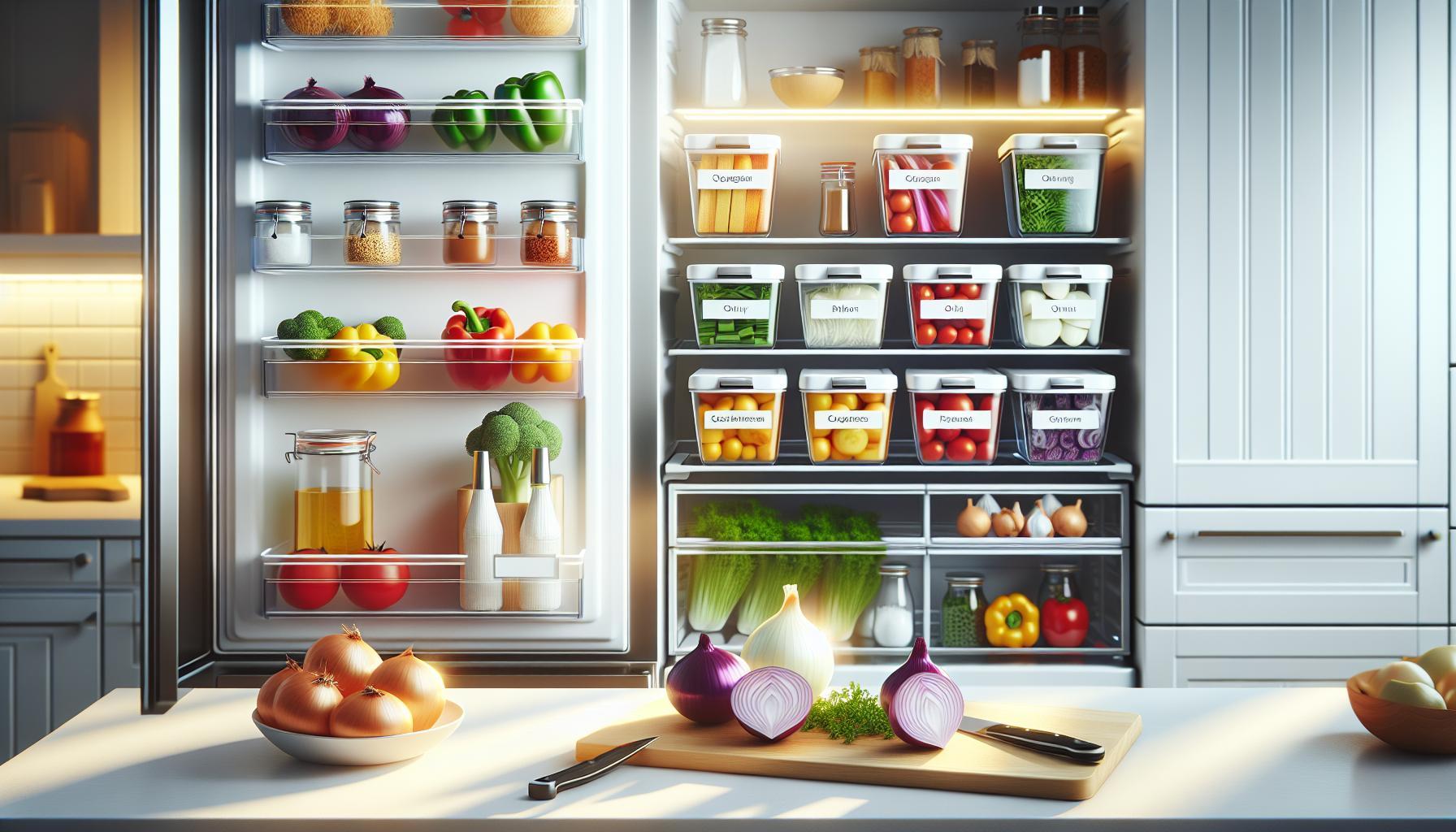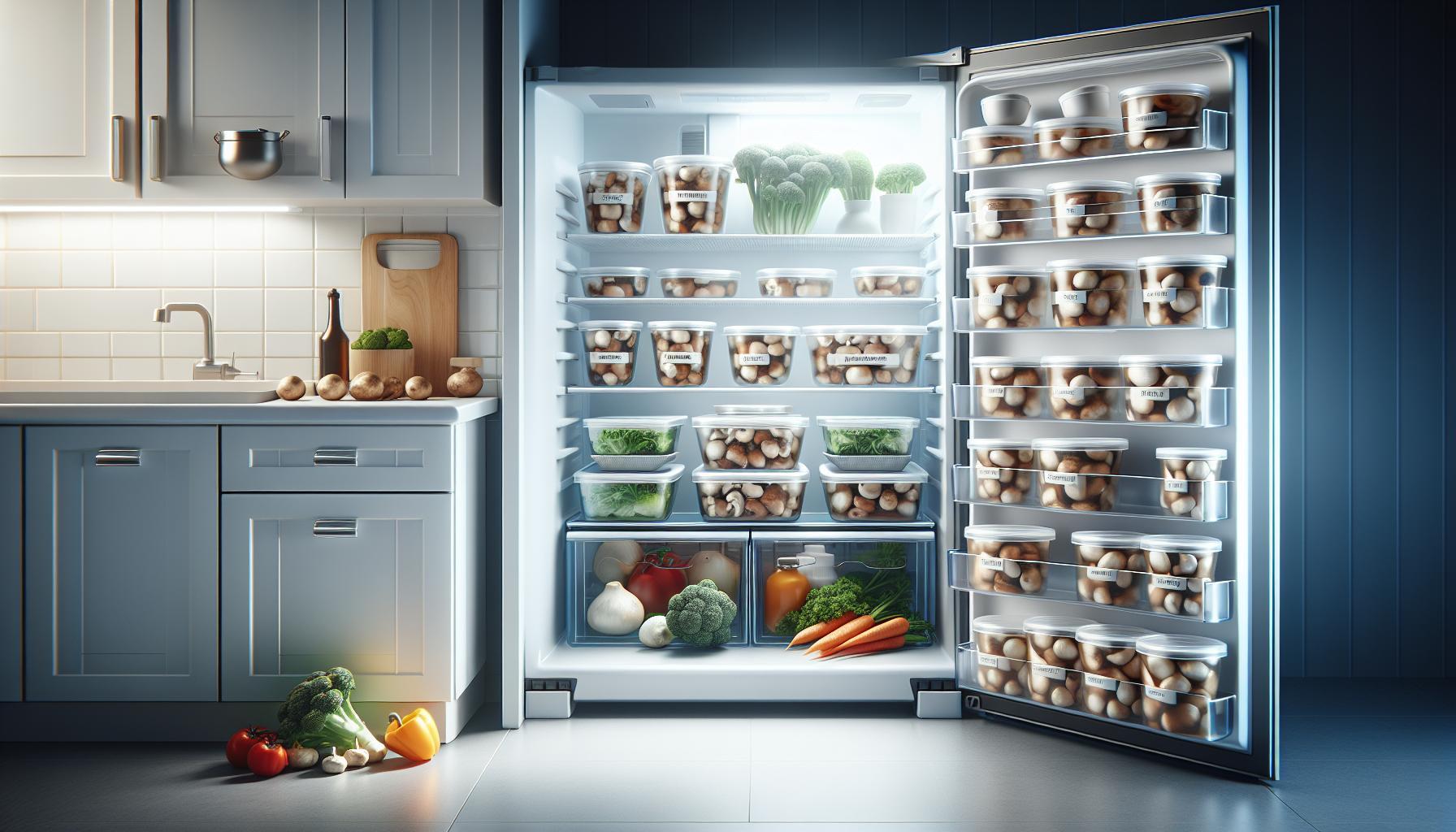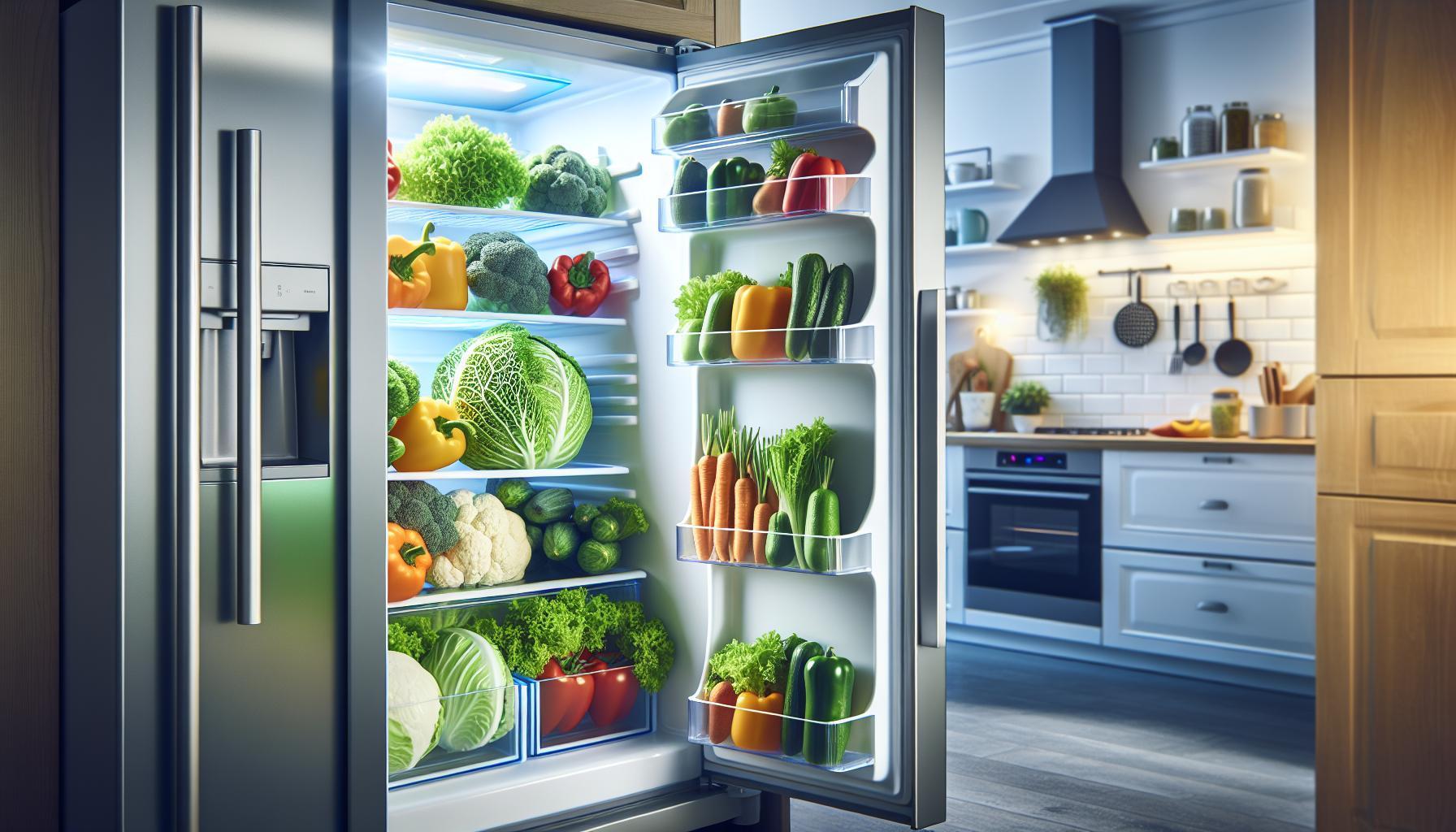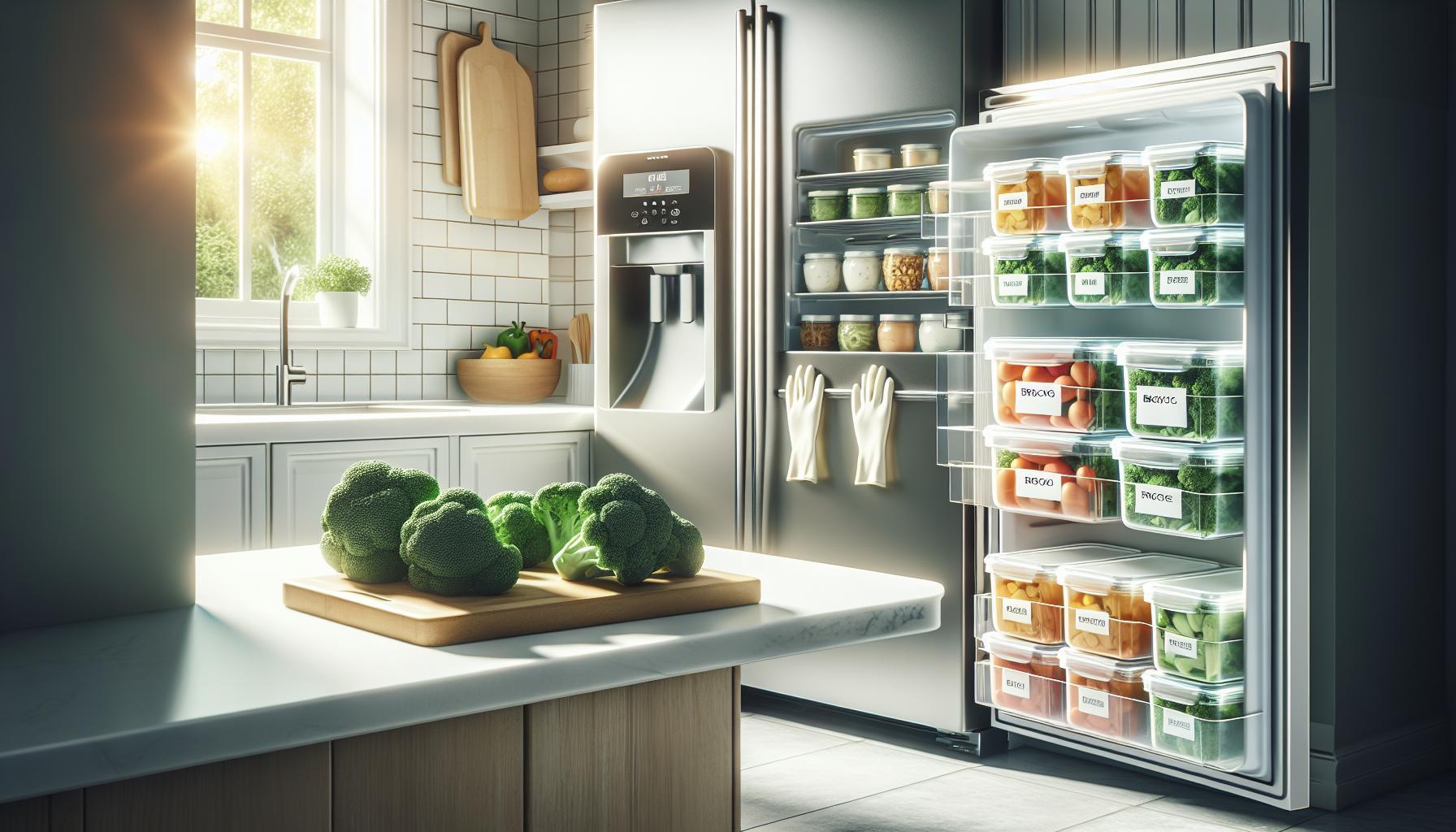Chopped onions are a staple in many kitchens, but knowing how long they last in the fridge can help you prevent waste and save time in meal prep. Proper storage is key; chopped onions can typically last about 7 to 10 days when stored correctly in an airtight container.
Keeping track of freshness not only ensures the best flavor in your dishes but also safeguards your health. Unused chopped onions can quickly become soggy or develop an off smell, leading to food waste and unnecessary trips to the grocery store. By understanding the best practices for storing chopped onions, you can make informed decisions that enhance your cooking experience and keep your kitchen running smoothly. Dive in to learn more about storage times, safety tips, and ways to maximize the use of your ingredients.
How Long Can You Store Chopped Onions in the Fridge?
Chopped onions are a staple in many kitchens, adding flavor and depth to countless dishes. However, knowing how long they last in the fridge is crucial for making the most of your culinary creations while minimizing food waste. Generally, freshly chopped onions can be safely stored in the refrigerator for about 7 to 10 days. After this timeframe, they may start to lose their freshness, flavor, and crunch.
To ensure that your chopped onions stay fresh for as long as possible, store them in an airtight container or tightly wrap them in plastic wrap. This helps to contain their moisture while preventing them from absorbing other odors present in the fridge. For optimal freshness, keep the container in the vegetable crisper drawer, where the temperature is more consistent and humidity higher, preserving their quality better than in the main compartment.
It’s important to regularly check your chopped onions for any signs of spoilage. If they become slimy, develop an off-putting odor, or show signs of mold, it’s best to err on the side of caution and discard them. Adhering to these storage practices not only extends the life of your chopped onions but also enhances your home-cooking experience by ensuring you have fresh ingredients on hand whenever you need them.
Signs Your Chopped Onions Have Gone Bad
Chopped onions can quickly become a breeding ground for bacteria and spoilage, making it essential for home cooks to recognize the signs that indicate their freshness is compromised. One of the first indicators that your chopped onions have gone bad is a change in texture. Fresh chopped onions should be crunch and firm; if they start to feel slimy or excessively soft, it’s time to discard them. This change often occurs due to moisture buildup and potential bacterial growth.
Another key factor to watch for is odor. Fresh onions have a distinct, sharp smell, but when they begin to spoil, they may emit a sour or off-putting odor. If your chopped onions produce any smell that deviates from their typical sharpness, it is best to throw them away. Mold growth is also a telltale sign of spoilage. If you see any fuzzy patches or discoloration on your onions, they should be discarded immediately, as certain molds may produce toxins that can be harmful if ingested.
To ensure food safety, it’s advisable to inspect your chopped onions regularly, especially if they’ve been stored for longer than the recommended period of 7 to 10 days. Keeping an eye out for these signs can help prevent food waste and ensure that your meals are not only delicious but also safe to eat.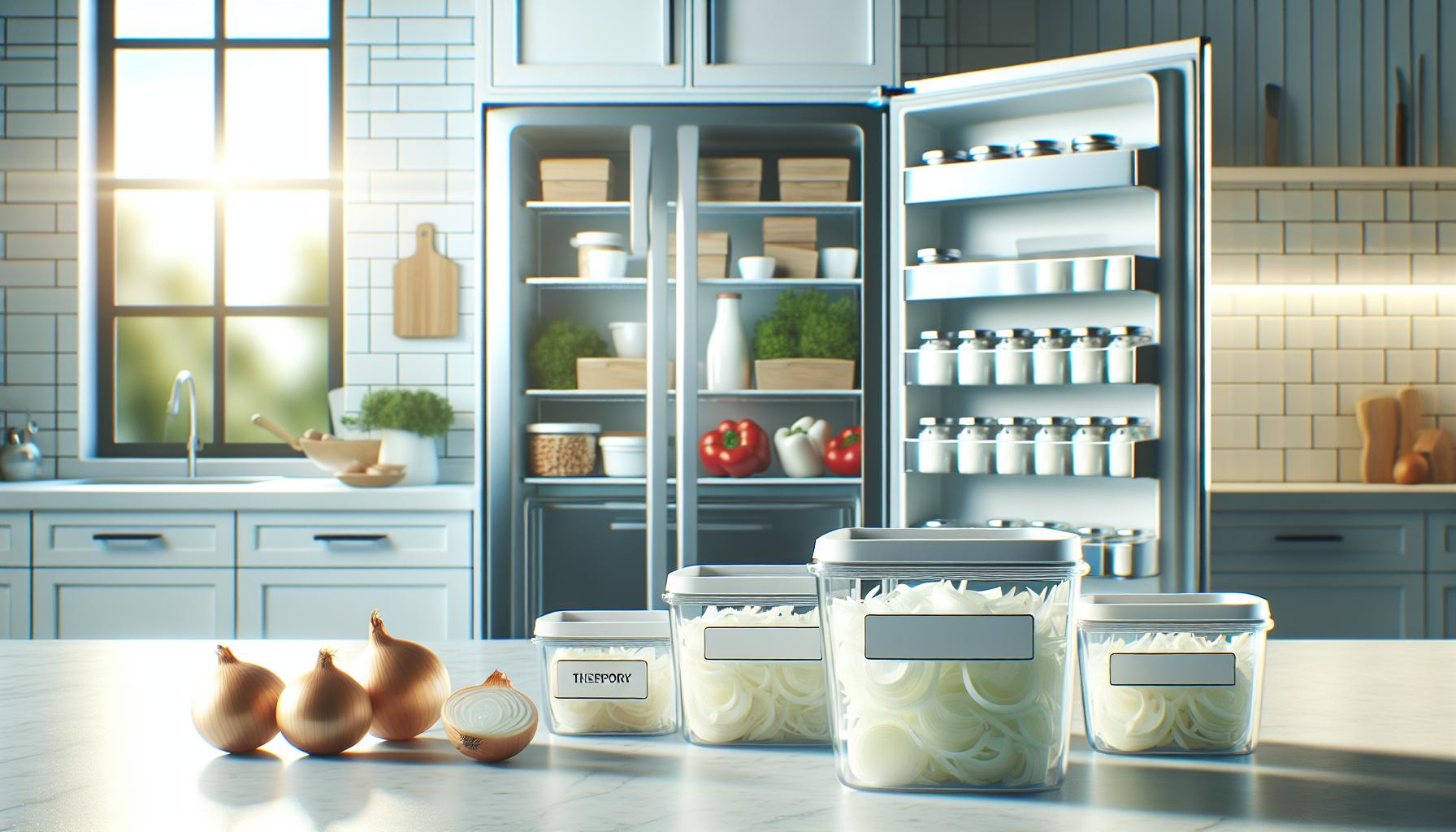
Best Practices for Storing Chopped Onions
Storing chopped onions properly can extend their shelf life significantly and prevent food waste. After being cut, onions lose their protective outer layers, making them more susceptible to spoilage. Therefore, choosing the right storage method is crucial to maintaining their freshness. To ensure optimal storage, always use an airtight container. This prevents moisture from entering, which can promote bacterial growth and spoilage. Glass or plastic containers with tight lids work best; just make sure to clean them thoroughly before use.
Make sure to store your container in the coldest part of your refrigerator, typically near the back, rather than in the door. This area maintains a more consistent temperature, which is essential for preserving the quality of the chopped onions. Ideally, chopped onions should be used within 7 to 10 days; however, checking their condition regularly is important, as spoilage can occur sooner or later depending on various factors, such as humidity and storage temperature.
For those who have more chopped onions than they can consume in a week, freezing is a viable option. Spread the chopped onions on a baking sheet to flash freeze them, then transfer them into freezer-safe bags. This method helps avoid clumping, making it easy to take out just the amount you need later. Frozen chopped onions can maintain their quality for several months, serving as a convenient pre-prepared ingredient for future meals.
Lastly, to maximize freshness, avoid washing chopped onions before storing them, as excess moisture can hasten spoilage. Instead, wash them just before you plan to use them. Remember that maintaining a clean and dry environment is key to prolonging the lifespan of your chopped onions, ensuring they remain a flavorful component in your cooking for as long as possible.
How to Freeze Chopped Onions for Long-Term Use
If you’re looking to extend the life of your chopped onions beyond the one to two weeks they typically last in the fridge, freezing is a fantastic option. Freezing not only halts spoilage but also preserves the onions’ flavor and nutritional value, making them a convenient ingredient for future cooking endeavors. The process is straightforward and requires minimal preparation, ensuring that you can store any excess onions without wasting them.
To freeze chopped onions effectively, start with fresh, undamaged onions. Prepare them by peeling and chopping according to your desired size. Here are the steps to follow:
- Spread and Flash Freeze: Lay the chopped onions out in a single layer on a baking sheet lined with parchment paper. Ensure they are spread out enough to prevent clumping.
- Freeze Until Solid: Place the baking sheet in the freezer for a few hours, allowing the onions to freeze solid. This step is crucial as it prevents the onions from sticking together.
- Transfer to Bags: Once the onions are fully frozen, transfer them to freezer-safe zip-top bags or airtight containers. Make sure to label the bags with the date, as frozen onions are best used within 6 to 12 months.
- Remove Air: Squeeze out as much air as possible from the bags before sealing to minimize the risk of freezer burn.
By following these simple steps, you can easily store chopped onions in your freezer while retaining their flavor and texture. When you’re ready to use them, there’s no need to thaw them first; simply add them directly to your cooking. This method not only saves time during meal prep but also contributes to reducing food waste in your kitchen. Enjoy the convenience of having chopped onions readily available for soups, stews, sautés, and more!
Common Mistakes When Storing Chopped Onions
When it comes to storing chopped onions, many people unknowingly make mistakes that can compromise the freshness and safety of this versatile ingredient. One common issue is failing to use airtight containers. Keeping chopped onions in an open bowl or loosely covered can expose them to air and moisture, leading to faster spoilage and absorption of unwanted odors from the refrigerator. For optimal storage, always use a tightly sealed container to minimize exposure to air and maintain moisture levels.
Another frequent oversight is not labeling the containers with the date. Chopped onions generally last about 7 to 10 days in the fridge, but without a date, it’s easy to forget how long they’ve been stored. Taking a moment to label your containers ensures you can easily track their age and use them while still fresh.
Many also store chopped onions near foods with strong odors, forgetting that they can absorb these scents. To prevent flavor contamination, store chopped onions away from items like cheeses or pickles. Additionally, temperature consistency is key; avoid placing them in the fridge door where temperatures fluctuate. Instead, keep them in a stable area of the fridge, ideally towards the back, where it is coldest.
Finally, reheating or repurposing older chopped onions without checking their freshness is a significant mistake. Always inspect for signs of spoilage, such as discoloration or off-odors, before including them in your meals. This careful approach not only maximizes the lifespan of your chopped onions but also enhances food safety, ensuring every dish is not just flavorful but safe to consume.
Creative Uses for Leftover Chopped Onions
Leftover chopped onions can be a versatile ingredient in your kitchen, enabling you to reduce waste and enhance the flavor of numerous dishes. Instead of letting your chopped onions linger in the fridge past their prime, consider these creative and practical uses to make the most of their fresh, pungent flavor.
One popular way to utilize leftover chopped onions is by incorporating them into sauces and dressings. The rich, aromatic flavor of onions can elevate any vinaigrette or marinade. Simply blend them with olive oil, vinegar, and your choice of herbs to create a zesty dressing for salads, grilled vegetables, or even as a marinade for meats. They can also be added to pre-made sauces to boost flavor-think barbecue sauce, pasta sauce, or even stir-fry sauces.
Another excellent option is to mix chopped onions into various dishes such as soups, stews, and casseroles. Onions can lay the foundation for flavor in many recipes. Sauté them first to bring out their sweetness and then mix them into your stews for added depth. Similarly, they can be a key ingredient in quiches or frittatas. Just whisk in your chopped onions along with eggs and other vegetables, pour the mixture into a pie crust or skillet, and bake for a hearty meal.
If you’re looking for quick snacks, use leftover chopped onions in dips. They can easily be stirred into cream cheese or yogurt to create a delicious onion dip that’s perfect for chips and veggies. Alternatively, blend them with beans and spices for a homemade bean dip that’s rich in flavor. This not only uses up your chopped onions but also offers your guests a tasty treat.
Lastly, consider freezing any leftover chopped onions for later use. Simply spread them out on a baking sheet, freeze until solid, then transfer to an airtight container. This method allows you to retain their flavor and ensures that you’ll have ready-to-use onions for future cooking endeavors. Frozen chopped onions can be added directly to soups, stews, or stir-fries, enhancing the convenience of cooking during busy times while minimizing food waste.
By exploring these creative uses, you can maximize the lifespan of your chopped onions while enhancing your meals’ flavors, ensuring that nothing goes to waste.
Nutrition and Safety: Chopped Onions Explained
Chopped onions not only add flavor to countless dishes but also come packed with essential nutrients, making them a valuable addition to your culinary arsenal. These versatile vegetables are low in calories yet rich in vitamins C and B6, manganese, and potassium, contributing to your overall health. Moreover, they are known for their potent antioxidant properties, particularly quercetin, which can help combat inflammation and boost heart health. However, knowing how to properly store and handle your chopped onions is crucial for maintaining both their nutritional value and food safety.
When storing chopped onions in the fridge, it’s essential to use an airtight container to prevent them from absorbing odors from other foods and to maintain their moisture. Under proper storage conditions, chopped onions can last about 7 to 10 days in the refrigerator. However, beyond this period, the risk of spoilage increases. Always inspect your onions before use: if they show signs of mold, significant discoloration, or an off smell, it’s safer to discard them.
To minimize waste and ensure the safety of your chopped onions, consider freezing them for longer preservation. Spread your chopped onions on a baking sheet and freeze them until solid, then transfer to a freezer-safe container. This method allows you to keep their flavor intact and have them readily available for future use, extending their shelf life up to six months. Just remember that once thawed, frozen chopped onions should be used immediately and should not be refrozen.
Food safety is paramount when handling any produce. Always wash your hands before and after manipulating chopped onions and make sure any surfaces or utensils used are cleaned thoroughly. This simple practice reduces the risk of cross-contamination and helps keep your kitchen a safe space for food preparation. By understanding the nutritional benefits and storage tips for chopped onions, you can incorporate them into your meals while ensuring your health and safety in the kitchen.
How to Maximize Freshness of Chopped Onions
To keep your chopped onions fresh for as long as possible, start with proper storage techniques right after preparation. Using an airtight container is crucial; this minimizes exposure to air and moisture, which can lead to quicker spoilage. Another effective method is to wrap chopped onions tightly in plastic wrap before placing them in the container, adding an extra layer of protection against odors and moisture loss. It’s best to store your chopped onions in the crisper drawer of your refrigerator, where humidity levels are typically higher, creating an ideal environment for maintaining freshness.
Temperature plays a significant role in the longevity of chopped onions. Keeping your refrigerator at a consistent temperature below 40°F (4°C) is essential. If you frequently open the refrigerator door, consider placing your container at the back of the fridge, where temperatures tend to remain more stable. Also, avoid storing your chopped onions near fruits like apples or bananas, which emit ethylene gas that can cause onions to spoil faster.
If you notice that your chopped onions are nearing the end of their freshness window, a great tip to extend their use is to incorporate them into meals promptly. For instance, adding them to soups, stews, or stir-fries can not only enhance flavors but also ensures that you utilize them before they spoil. Additionally, consider adjusting your meal prep routines to account for chopped onions – if you chop more than you need for a single meal, look for ways to include them in your weekly meal plan, such as omelets or salads, to prevent waste.
Lastly, always check your stored chopped onions before use. Signs of freshness include a firm texture and a mild onion scent. If the onions are starting to look slimy, developing an off smell, or showing discoloration, it’s best to discard them to maintain food safety. By integrating these practices into your kitchen routine, you can extend the freshness of your chopped onions, simplify meal preparation, and enhance your culinary creations.
The Impact of Temperature on Onion Storage
To maintain the freshness and edibility of chopped onions, the temperature at which they are stored is critical. Chopped onions thrive best in a refrigerator set to a temperature below 40°F (4°C). Keeping the refrigerator consistently cold prevents the growth of bacteria and mold, which can occur at higher temperatures, ultimately extending the shelf life of your chopped onions.
When storing chopped onions, it’s wise to place them in the back of the refrigerator, where temperatures tend to be cooler and more stable compared to the front, which can fluctuate with frequent door openings. Additionally, avoid storing onions near ethylene-producing fruits such as apples and bananas, as ethylene gas can accelerate spoilage. The ideal storage spot would be the crisper drawer, designed to retain humidity, which can also contribute to prolonging the life of chopped onions.
Storage Guidelines:
- Store chopped onions in an airtight container or wrap tightly in plastic wrap to minimize exposure to air and moisture.
- Consume your chopped onions within 5 to 7 days for optimal freshness.
- Ensure your refrigerator remains at a consistent temperature below 40°F (4°C).
- Check for any signs of spoilage before use, such as sliminess or discoloration.
By adhering to these temperature guidelines and storage practices, you can significantly improve the longevity of chopped onions, reducing waste and enhancing flavor in your meals.
Alternatives to Refrigerating Chopped Onions
For those who find themselves with leftover chopped onions and no fridge space, there are several viable alternatives to refrigeration that can keep them safely for short periods. One great option is to store your chopped onions in a cool, dark place at room temperature, especially if you live in a climate that is not too hot. Keeping them in a sealed container away from direct sunlight and heat sources can help maintain their freshness for a brief time. However, this method is best for freshly cut onions and should only be considered for use within 2 to 3 days.
Another approach is to integrate your chopped onions into your cooking immediately after cutting. When prepared for dishes, they can lose their pungency over time when left out, but cooking them promptly not only helps to use them efficiently but also enhances flavor. Any leftovers can then be stored properly in the fridge or frozen for later use, addressing multiple needs at once.
If you’re planning to use your chopped onions within a few days but want to avoid refrigeration, consider placing them in an airtight bag with a small amount of olive oil. This method can help prevent the onions from drying out and maintain their flavor. Just remember to consume these within 2 to 3 days as well, as oil can also become rancid if left too long.
Lastly, if all else fails and you cannot use the onions in time, consider integrating them into your compost bin to recycle the nutrients. Chopped onions can be a fantastic addition to compost, enriching the soil for your garden. Just ensure that you use them responsibly and avoid any signs of spoilage before doing so.
How to Store Onion Peels and Scraps Responsibly
Using onion peels and scraps responsibly not only contributes to reducing kitchen waste but also can be beneficial for several practical uses. Rather than tossing them in the trash, consider incorporating them into compost or other applications that can enrich your home or garden.
One effective way to utilize onion peels is through composting. Onion skins are rich in nutrients, which can enhance the fertility of your garden soil. When composted, they break down and contribute valuable organic matter. To ensure healthy compost, it’s advisable to mix onion scraps with a variety of other organic materials, such as fruit and vegetable peels, yard waste, and brown materials like leaves or cardboard. This will create a balanced compost pile that retains moisture and promotes beneficial microbial activity. Aim to compost onion scraps within a few days of cutting them to maximize their nutritional content.
For those interested in garden health, onion peels can also be used in a natural plant fertilizer. Simply steep the scraps in water for a few days to create a nutrient-rich liquid fertilizer that can be used to water your plants. This not only makes excellent use of scraps but also nourishes your plants with a mild supply of potassium and other essential nutrients. Another creative option is to add onion peels to soups and stocks for extra flavor and color, as they can impart a subtle sweetness and rich hue.
It’s crucial to handle onion peels and scraps safely. Always ensure they are fresh and free from any signs of mold or spoilage before incorporating them into your compost or recipes. As a rule of thumb, if the scraps look damp or have an off odor, it’s best to discard them to prevent any food safety issues. Through these mindful practices, you can minimize waste in your kitchen while enhancing your gardening efforts and culinary creations.
Frequently Asked Questions
Q: How can I tell if my chopped onions are spoiled?
A: Signs that chopped onions have spoiled include a slimy texture, strong odor, dark discoloration, or visible mold. If any of these signs are present, it’s best to discard the onions to avoid foodborne illness.
Q: Can I store chopped onions in water?
A: While you can briefly soak chopped onions in water to reduce their intensity, it’s not recommended for long-term storage. Instead, transfer them to an airtight container and refrigerate to maintain freshness. For more tips, see the section on best practices for storing chopped onions.
Q: How long do caramelized onions last in the fridge?
A: Caramelized onions can last up to one week in the refrigerator when stored in an airtight container. To extend their shelf life, consider freezing them, as outlined in our freezing section.
Q: Are there any safety tips for storing chopped onions?
A: Always store chopped onions in a sealed container to prevent odor spread and contamination with other foods. Also, keep them at a consistent refrigerator temperature below 40°F (4°C) to ensure freshness.
Q: Do chopped onions retain their nutritional value in the fridge?
A: Yes, chopped onions retain their nutritional properties for several days when stored properly in the fridge. For optimal freshness and nutrient retention, consume them within a week.
Q: What is the best way to use leftover chopped onions?
A: Leftover chopped onions can be added to soups, stews, stir-fries, or omelets. They are also great for enhancing flavor in salads and dips. Check our section on creative uses for more ideas.
Q: Can I refreeze chopped onions after thawing?
A: It’s generally not recommended to refreeze chopped onions after they have been thawed, as this can affect their texture and flavor. For the safest option, only freeze onions that have not been previously thawed.
Q: What are alternatives to refrigerating chopped onions?
A: If refrigeration is not an option, consider storing chopped onions in a cool, dark place in a ventilated container. However, be aware that this method significantly reduces their lifespan compared to refrigeration. For more storage options, refer to the alternatives section.
In Retrospect
Now that you know how long chopped onions last in the fridge, you can prevent waste and save time in the kitchen. Remember, properly storing your onions will help maintain their flavor and safety, ensuring you can use them in a variety of delicious dishes. For more tips on maximizing freshness, check out our guides on “Food Storage Basics” and “Best Practices for Veggie Storage.”
Don’t let our advice stop here-sign up for our newsletter to get expert tips straight to your inbox, or explore our recipe section for new meal ideas! If you have any questions or want to share your own storage hacks, drop a comment below. Let’s keep the conversation going! Keeping your kitchen efficient has never been easier, so take action today to make the most of your ingredients.

